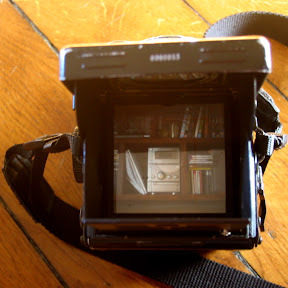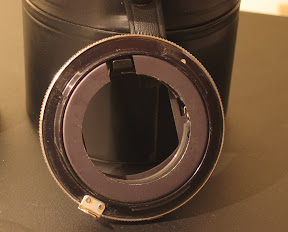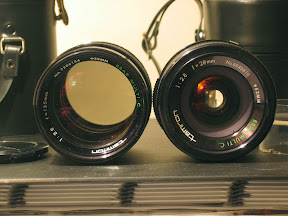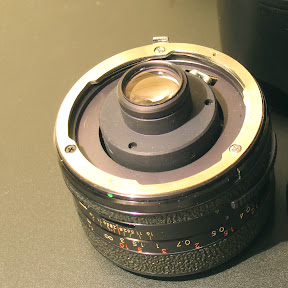YashicaMat 124G dint make mumuse with dandruff, you want to have anything other than the traditional perforated films 35mm (format 135), for example (chronological classic) format 120 : rolls 6cm wide. For that, it is still necessary to have a camera that uses this format, knowing that the legendary Hasselblad are certainly excellent, but expensive, even very old and used, and most of Kodak Brownies found in the flea markets are totally unusable.
A good compromise: the camera reflex twin goals. The most famous in this genre is the Rolleiflex, but again, it costs a crazy price, even used. A little less insane than Blad, but crazy nonetheless, when we have casual use. So, it's on a device relatively new, and manufacturing in Japan, the YashicaMat 124G.




- Type: SLR 6 × 6 to twin objectives
- Manufacturer: Yashica
- Model: YashicaMat 124G
- Year of manufacture: 1971 - ?
- Purchase Date: October 21, 2007
The principle of these devices: the two objectives have a formula Optical identical and are set to the same front moves and which moves forward or backward to complete the development. The top one allows targeting, through a mirror and a frosted one looks at the top (see third photo). The lower one is facing the film, it was through him that is shooting. It has the advantage of focusing directly, constantly on the frosted the sharpness of the image, without the need for a telemetry system, without the disadvantage of a movable mirror, mechanically sensitive ( especially as the mirror is larger than 35mm).
The goal is not interchangeable shutter it is integrated, it is a radial valve located at the focal point of the lens, not a horizontal or vertical curtain located at the focal plane, ie just before the film. Advantage: the focal point, as its name suggests, the light corresponding to the image is almost together at one point, the opening and closing the shutter is simultaneous for all the image.
On a 35mm case, however, the opening of the image is shifted in time by following the path of the curtain - even if the entire image receives the same amount of light because the second curtain (which ", closes the window") moves in the same direction as the first. The exhibition is just shifted in time from one end to another image, a few fractions of seconds. It's trivial for pictures in natural light, by cons for the flash picture is more annoying: the flash is anyway much shorter than the opening time of shutter must ensure that the first curtain is finished and open the second has not begun to close when it starts Lightning - otherwise a part of the photo is taken with flash and one without. At high speeds, close the second curtain starts before the first has finished open: no flash picture possible. We must therefore follow an exposure time limit for the camera flash, this is called speed flash sync (between 1 / 60 and 1/125th following boxes).
On radial valve housings, therefore, no problem: you can take pictures with flash at any speed, which is interesting when using the flash as a supplement and not as the sole source of light.
addition to these theoretical advantages, the device is YashicaMat most sympathetic side of the crank film advance (see photo 2) is a bit noisy and not very convenient, but deliciously retro. It has a photocell (the small circle above objectives, the first picture), but on mine like many of her contemporaries, she no longer works. The lens is also of excellent quality, enjoying the same treatment as that of multilayer casings 35mm from the same period. I owe him the coup some pictures which I am relying more r: is not it ultimately the best argument that can be given for a camera?



















